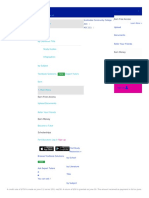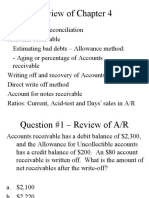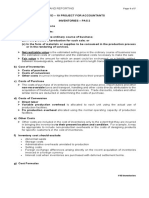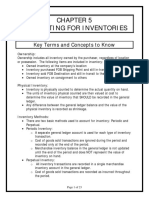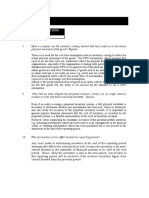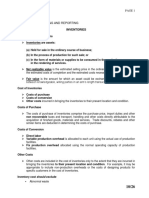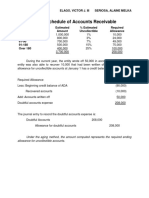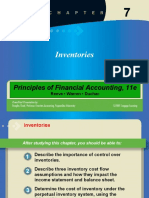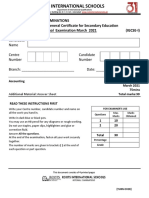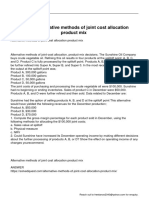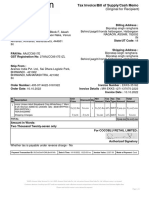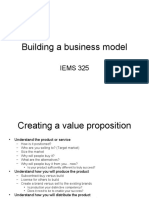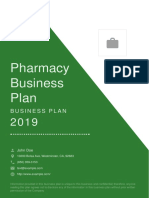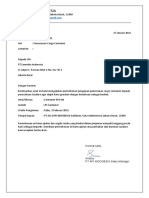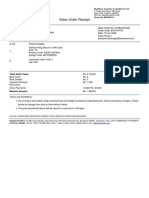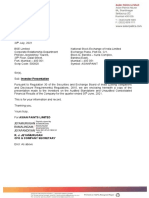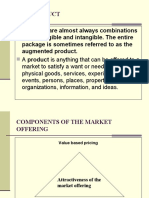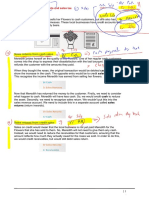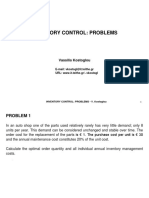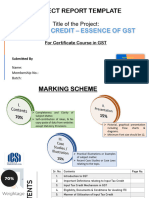ACCT10002: Tutorial 4 In-class Exercises
This tutorial provides exercises relating to the following areas of study:
The difference in reporting for a firm providing The concept of valuation of inventory
goods and a firm providing services
The method of recording inventory for changing LCNRV
prices
The perpetual recording method Calculation of Cost of Sales and ending
Inventory.
Students are required to prepare for all the questions prior to attending the tutorial.
1. (Q 4.2)
(a) Explain the profit measurement process in a merchandising business.
Sales Revenue – cost of sales = gross profit
Gross profit – other expenses = net profit
(b) How does profit measurement differ between a merchandising business and a service
business?
sales are main revenue source
2 main type of expenses are cost of sales and operating expenses.
2. (Q 4.9)
What factors affect a business’s gross profit ratio, i.e. what can cause the gross profit ratio to
increase and what can cause it to decrease?
Mark up price
Cost of product
Competition making business lower price
3.
Explain the requirements of different inventory recording systems and discuss the similarities
and differences.
Perpetual and periodic.
Both revenue is recorded at point of sale. Perpetual cost of sale recorded at point of sale while
periodic cost of sale recorded at end of period. Periodic has manual stock takes at the end
of the period while perpetual has the exact stocktake at any point in time.
�4.
Part A. The following information relates to Hans Olaf Pty Ltd:
1. On 5 April, purchased inventory on credit from R. Ward & Co. for $19 800, terms 2/7,
n/30.
2. On 6 April, paid freight costs to Freight Masters of $990 on inventories purchased from R.
Ward & Co.
3. On 7 April, purchased equipment on account for $28 600.
4. On 8 April, returned incorrect inventories to R. Ward & Co. and was granted a $3300
allowance.
5. On 11 April, paid the amount due to R. Ward & Co.
Part B. The following transactions are for Sailing Boats Ltd:
1. On 7 December Sailing Boats Ltd sold $792 000 (including GST) of inventory to Ships
Ahoy Ltd, terms 2/7, n/30. The cost of the inventory sold was $480 000.
2. On 8 December Ships Ahoy Ltd was granted an allowance of $33 000 for inventory
purchased on 7 December.
3. On 13 December Sailing Boats Ltd received the balance due from Ships Ahoy Ltd.
Required:
Assuming perpetual inventory recording system is adopted, for both Part A and Par B:
a) Prepare the journal entries to record these transactions assuming GST is not
applicable.
b) Prepare the journal entries to record these transactions assuming GST is included
when applicable.
Date Account and explanation Dr Cr
5/4 Inventory 18000
GST paid 1800
Accounts payable 19800
6/4 Inventory 900
Gst paid 90
Cash 990
7/4 Equipment 26000
GST paid 2600
Accounts payable 28600
8/4 Accounts payable 3300
Inventory 3000
GST paid 300
11/4 Accounts payable 16500
Settlement discount 330
Cash 16170
7/12 Accounts receivable 792 000
Sales revenue 720 000
� GST received 72 000
Cost of sales 480 000
Inventory 480 000
8/12 Sales returns and allowances 30 000
GST received 3000
Accounts receivable 33 000
13/12 Cash 743 820
Settlement discount 13 800
GST payable 1380
Accounts receivable 759 000
5. (PSA5.6)
Fontana Ltd began operations on 1 July. It uses a perpetual inventory system. During July,
the business had the following purchases and sales.
Date Purchase Units Unit Cost Sale Units
July 1 5 $ 95
6 3
11 4 106
14 3
21 3 112
27 4
Required
(a) Determine the ending inventory under a perpetual inventory system using (1) FIFO,
(2) average cost and (3) LIFO.
1) 1235 – 1011 = 224
2) 1235 - 1029.17 = 205.83
3) 1235 – 1045 = 190
(b) Which costing method produces the highest cost allocation to ending inventory?
Note: Draw up a table similar to the one below to prepare your answers.
Fontana Ltd Inventory Record - First-In-First Out Cost Method
Date Purchases Sales Balance
Units Price Total Units Price Total Units Price Total







